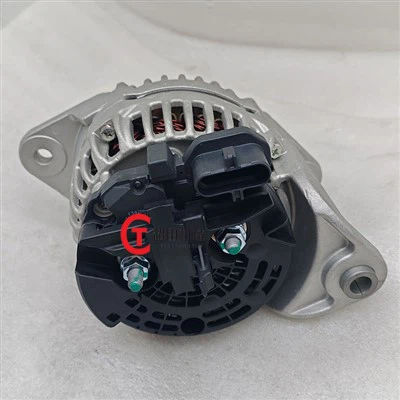Hey there! As a monitor supplier, I get this question a lot: "Can I use multiple monitors with one computer?" Well, the short answer is yes, you totally can! And in this blog, I'm gonna break down everything you need to know about using multiple monitors with a single computer.
Why Use Multiple Monitors?
Before we dive into the how - to, let's talk about why you might want to use multiple monitors in the first place. There are tons of benefits, and it really depends on what you use your computer for.
If you're a gamer, having multiple monitors can give you a more immersive experience. You can have your game on one screen and your chat or stream on another. For example, if you're playing a racing game, you could have the main game view on the center monitor and a rear - view mirror or map on the side monitor.
For office workers, multiple monitors can boost productivity big time. You can have your email open on one screen, a document you're working on in the middle, and a spreadsheet on the other. No more constantly alt - tabbing between windows. It's like having a bigger, more organized desk for your digital work.
Content creators also love multiple monitors. Video editors can have the timeline on one screen, the preview on another, and all their tools and effects easily accessible on a third. Graphic designers can have their design software open on one monitor and reference images on another.
Compatibility
Now, let's get into the nitty - gritty of making it work. The first thing you need to check is your computer's compatibility. Most modern computers, whether they're desktops or laptops, are capable of supporting multiple monitors.
For desktops, it mainly depends on your graphics card. High - end graphics cards usually have multiple output ports, like HDMI, DisplayPort, and DVI. The more ports your graphics card has, the more monitors you can connect. For example, if your graphics card has two HDMI ports and one DisplayPort, you can connect up to three monitors.
Laptops are a bit more limited, but they still can handle multiple monitors. Most laptops have at least one HDMI or DisplayPort output. You can connect an external monitor to this port. Some laptops also support USB - C to DisplayPort or HDMI adapters, which can expand your monitor options.
Connecting Multiple Monitors
Once you've confirmed that your computer can support multiple monitors, it's time to connect them. Here's a step - by - step guide:
- Gather your cables: Make sure you have the right cables for your monitors and computer ports. If your monitor has an HDMI port and your computer has an HDMI output, use an HDMI cable. If you need to convert between ports, like from USB - C to HDMI, get the appropriate adapter.
- Power off your computer and monitors: This is important to avoid any electrical issues.
- Connect the monitors: Plug one end of the cable into the monitor and the other end into the computer's output port. If you're using multiple monitors, connect each monitor to a different port on your computer.
- Power on your monitors and computer: Turn on your monitors first, then your computer. Your computer should automatically detect the new monitors.
Setting Up Your Multiple Monitor Display
After connecting the monitors, you need to set them up. Here's how:


- Windows: Right - click on your desktop and select "Display settings". In the Display settings window, you'll see a layout of your monitors. You can drag and arrange them to match how they're physically set up on your desk. You can also choose how you want to use the monitors, like extending your desktop or duplicating the display.
- Mac: Click on the Apple menu and select "System Preferences". Then click on "Displays". Here, you can arrange the monitors and adjust settings like resolution and orientation.
Our Monitor Options
As a monitor supplier, we have a wide range of monitors for different needs. Check out some of our popular products:
- Display Panel 450 - 0714 Electric Monitor 4500714 for Excavator E330DL: This monitor is perfect for heavy - duty applications like excavators. It's durable and provides clear visuals.
- Excavator E320C E330C Monitor 157 - 3198 1573198 Display Panel: Designed specifically for certain excavator models, this monitor offers high - quality display and reliable performance.
- Excavator Monitor 11888261 Display Panel for Excavator Sy215c Sy195c: Another great option for excavator operators, this monitor ensures accurate information display.
Troubleshooting
Sometimes, things don't go as smoothly as planned. Here are some common issues and how to fix them:
- Monitor not detected: If your computer doesn't detect a monitor, check the cable connections. Make sure the cable is plugged in securely. You can also try using a different cable or port.
- Display issues: If the monitor has a blurry or distorted image, adjust the resolution settings. Make sure the resolution is set to the native resolution of the monitor.
- Color problems: If the colors on your monitor look off, check the color settings in your computer's display settings. You can also try calibrating your monitor.
Conclusion
Using multiple monitors with one computer is a great way to enhance your gaming, work, or creative experience. With the right setup and a bit of troubleshooting, you can enjoy the benefits of a multi - monitor setup.
If you're interested in purchasing monitors for your multi - monitor setup or have any questions about our products, feel free to reach out. We're here to help you find the perfect monitors for your needs. Whether you're a gamer, an office worker, or a content creator, we've got you covered.
References
- "Computer Graphics: Principles and Practice" by Foley, van Dam, Feiner, and Hughes
- "Display Technology Handbook" by John P. Friel






